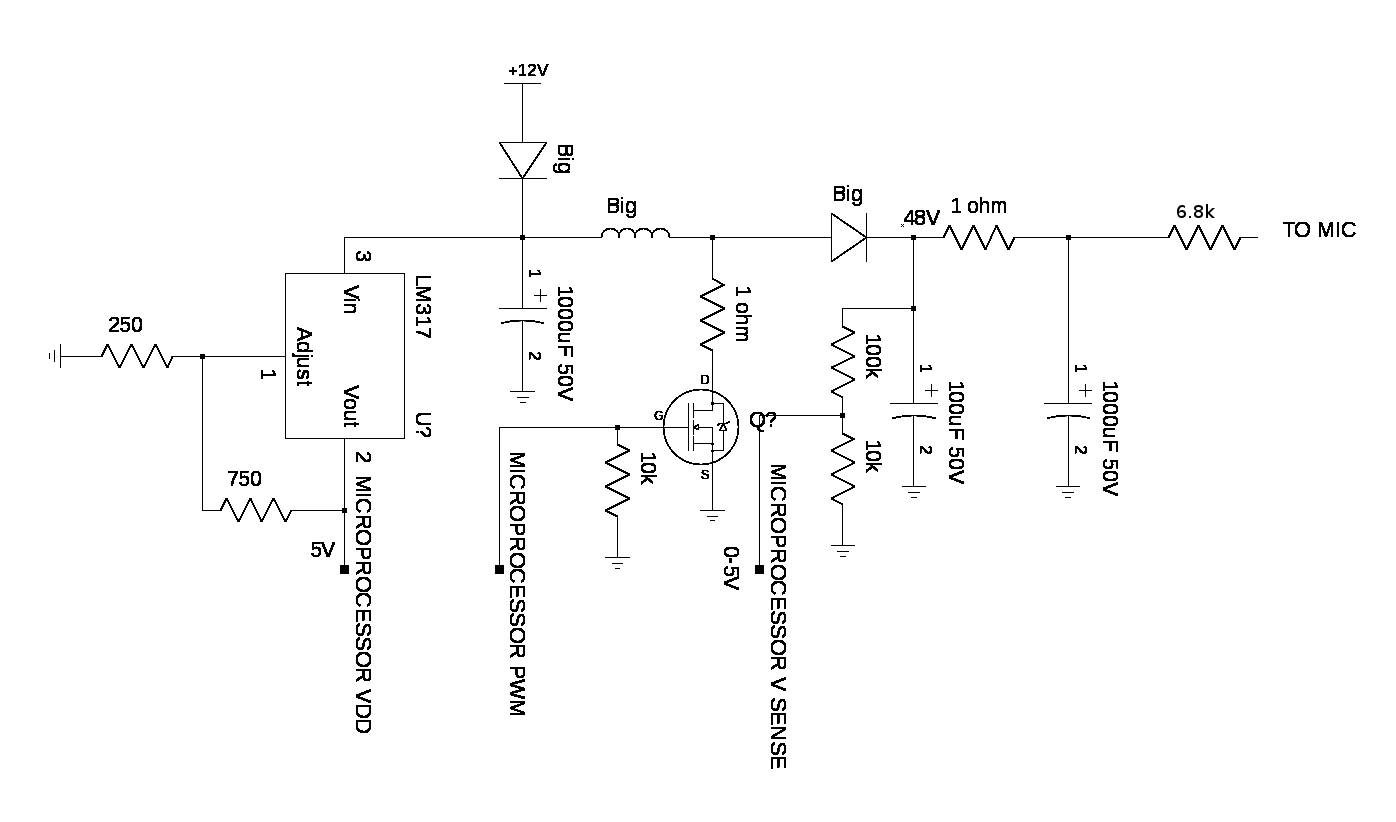The ultimate 4 channel audio recorder was the 1st ADC good enough to begin stressing the preamp. Tests showed the phantom power was the largest source of noise. The op-amp & pot were actually below the ADC noise floor.
It was a good thing, because a 2nd op-amp stage might be required to get the microphone to saturate the ADC.
The mane event is of course, the phantom power.

There was a schematic from 2011. Several years later, a bag of xena diodes was added to prevent over voltage. There weren't any commercial products which did it from batteries. Voltage converters to make 48V out of 12 were expensive & rare, so it was simplest to make a booster out of spare parts. Much effort was spent to minimize the output ripple with passives, but it was still awful. The only reason it worked was the ripple was above human hearing & canceled by the differential pairs, but it does reduce headroom & the differential signal isn't perfect.
Years later, the 1 boost converter at mouser is a whopping $20 + shipping, so the easiest solution was whacking in a linear regulator & seeing if it not only eliminated the ripple but also the noise. Didn't realize in those days that there was no limit to the input voltage of a linear regulator. The only limit is the drop from input to output, so they can actually drop 60V to 48V.
The problem is the LM317 needs a 3mA load to be stable, so you whack in a trim pot for R2 in your LM317 datasheet. A 7500 R2 & a 200 R1 aught to do it & provide 6mA load current. Then, the boost converter fails to get above 24V & is unstable. The problem is at high voltages, R2 dissipates a lot of power. You're lucky to get the 0.5W rating of a trim pot. 48/7700 * 48 = 0.30W Also, the boost converter never reaches 48V with a 6mA load. It's never easy.
 lion mclionhead
lion mclionhead
Discussions
Become a Hackaday.io Member
Create an account to leave a comment. Already have an account? Log In.